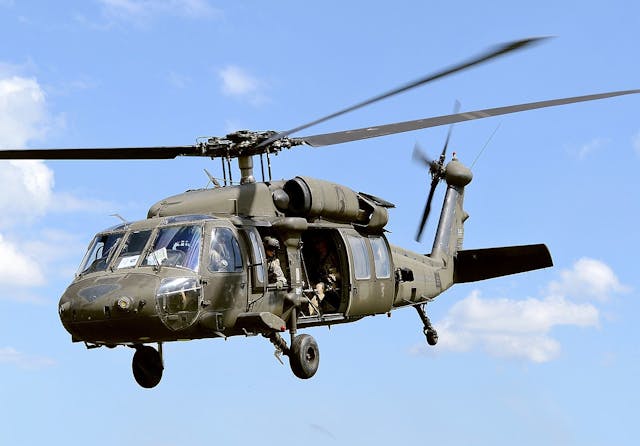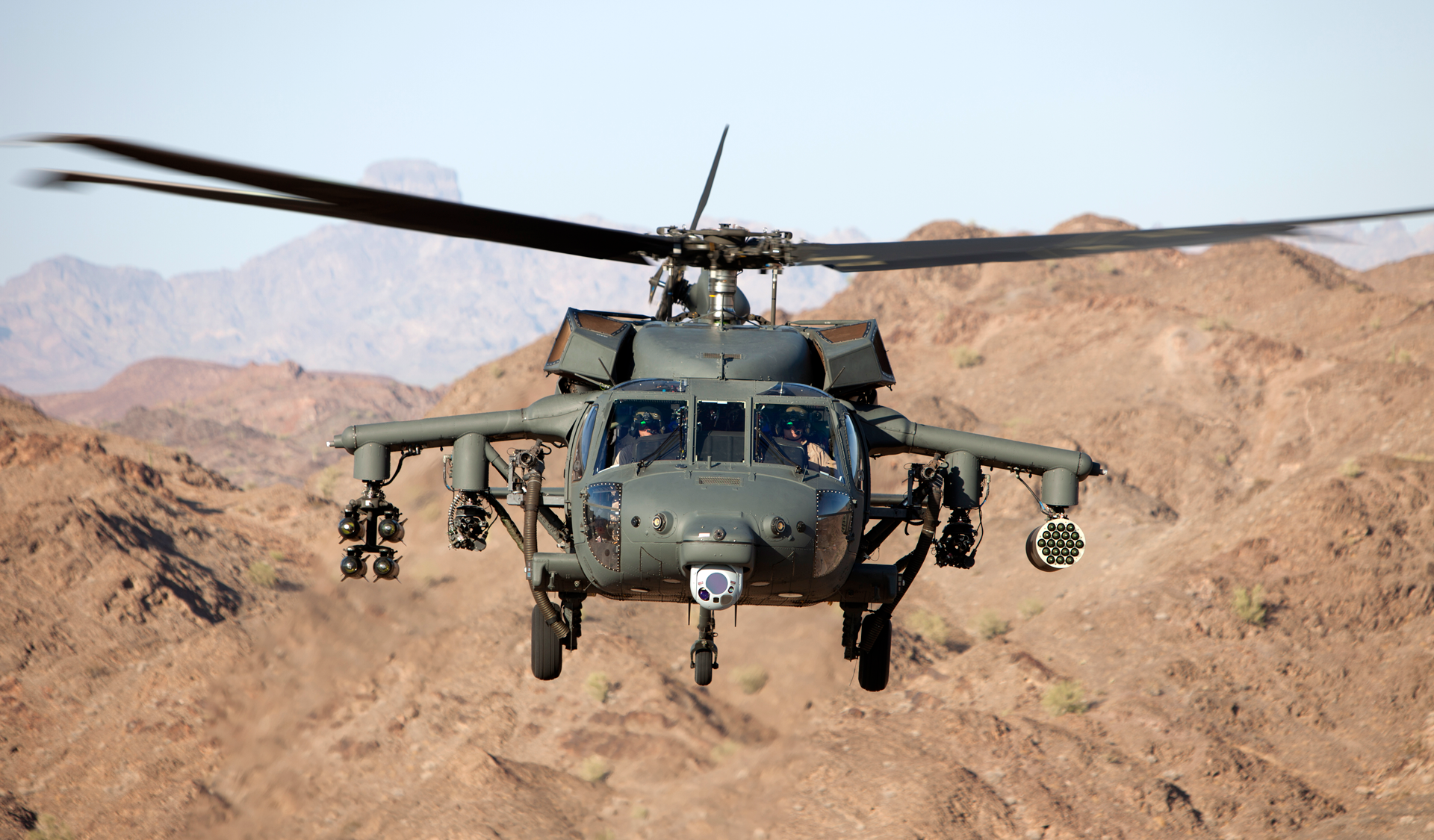Discover the Background and Development of the Blackhawk Helicopter Over Years
Discover the Background and Development of the Blackhawk Helicopter Over Years
Blog Article
Blackhawk Helicopters: Reinventing Civil and military Air travel
The introduction of Blackhawk helicopters in the late 1970s marked a significant advancement in both military and civil aeronautics. Their multi-role capabilities have not just transformed army operations but have actually likewise found extensive applications in noncombatant markets such as emergency solutions and catastrophe feedback. The assimilation of innovative modern technologies has actually better improved their functional efficiency and reliability. However, as we analyze their profound influence, it is essential to consider the future trajectory of Blackhawk air travel and the challenges that may exist in advance in a rapidly transforming landscape. What implications could this hold for the following generation of aerial operations?
Background of Blackhawk Helicopters
Historically, the growth of Blackhawk helicopters started in the 1960s, driven by the USA Army's demand for a versatile energy aircraft to change the aging fleet of helicopters in service at that time. The Army sought a platform that might execute a variety of objectives, including army transportation, medical evacuation, and logistical assistance, with boosted rate, haul, and range capability. In 1972, Sikorsky Airplane Corporation was awarded the agreement for the new design, which would become called the UH-60 Blackhawk.
The Blackhawk's design was characterized by advanced technologies, including a twin-engine arrangement, a four-blade major rotor system, and a durable airframe created for durability in combat scenarios. The first trip of the prototype took place in 1974, and by 1979, the Blackhawk got in service, promptly coming to be a keystone of the Army's air travel abilities. Its operational flexibility and reliability were apparent in different army operations throughout the 1980s and beyond. Throughout the years, the Blackhawk has gone through various upgrades, ensuring its relevance in contemporary warfare while likewise leading the way for its adjustment in civil air travel duties, better strengthening its standing as an iconic aircraft.
Armed Force Applications and Effect
The flexibility of the UH-60 Blackhawk has actually made it a vital possession in numerous military applications since its introduction. Created for multi-role capacities, the Blackhawk sustains army transportation, medevac operations, reconnaissance goals, and logistical support. Its capability to operate in varied environments, from metropolitan setups to sturdy terrains, enhances its effectiveness in combat and humanitarian missions alike.
Blackhawks have actually played critical duties in many armed forces procedures, consisting of the Gulf War and operations in Somalia and Iraq. They master rapid army deployment and discharge, substantially enhancing operational effectiveness and response times. The helicopter's advanced avionics and flight systems allow for precision objectives under unfavorable climate condition and at night, consequently optimizing mission success prices.
Moreover, the Blackhawk's robust building and effective performance allow it to hold up against aggressive settings, making it a favored selection for special procedures forces. Its effect expands past straight battle duties, as it has likewise contributed in catastrophe alleviation and recuperation efforts, showcasing its adaptability and reliability. The continued advancement of the Blackhawk's abilities ensures its significance in contemporary army method, solidifying its heritage as a cornerstone of military aeronautics.
Technological Innovations
Various technical developments have dramatically improved the capabilities of the UH-60 Blackhawk, guaranteeing it stays at the leading edge of military air travel. One of one of the most significant advancements is the combination of sophisticated avionics systems, which give pilots with real-time information, maximizing situational awareness and decision-making. The intro of electronic cabin displays changes typical analog tools, improving operations and lowering pilot work.
In addition, the incorporation of composite materials has actually enhanced the helicopter's architectural integrity while reducing weight, consequently enhancing fuel effectiveness and haul capability. The Blackhawk's blades system has additionally progressed, featuring quieter and Discover More Here more efficient blades that minimize sound trademarks, critical for covert procedures.
Furthermore, the application of fly-by-wire modern technology improves flight control accuracy and stability, permitting better efficiency in various environments. Boosted interaction systems allow trustworthy and safe information exchange, assisting in collaborated missions.
The versatility of the Blackhawk has actually also been enhanced via modular style, permitting quick reconfiguration to satisfy varied mission demands. These technologies jointly make sure that the UH-60 Blackhawk continues to be a crucial possession in the collection of modern military forces, with the ability of responding properly to a selection of functional obstacles.
Civilian Makes Use Of and Profits


Additionally, Blackhawks are used in firefighting operations, especially in challenging terrains. Equipped with water buckets or aerial firefighting innovations, they boost the capacities of ground teams, allowing much more efficient actions to wildfires. The helicopters have found duties in legislation enforcement and search-and-rescue objectives, reinforcing public security efforts in urban and wild settings.
In the realm of facilities support, Blackhawk helicopters are used for transport of employees and tools to hard-to-reach areas, such as oil well and remote building and construction websites. The versatility of these aircraft, combined with their durable style, uses both performance and reliability, making them indispensable possessions throughout different sectors in the civilian landscape. Thus, article the Blackhawk helicopter remains to make considerable contributions beyond its armed forces heritage.
Future of Blackhawk Aeronautics
Emerging innovations and shifting functional demands are positioned to shape the future of Blackhawk aviation considerably. As private and military fields increasingly focus on versatility and effectiveness, innovations such as sophisticated avionics, expert system, and improved materials will redefine the abilities of Blackhawk helicopters - Blackhawk Helicopter. These innovations will certainly not just improve flight efficiency yet additionally increase goal preparation and execution with real-time information analysis and decision-making assistance

Moreover, sustainability will come to be a focal factor in future Blackhawk styles. Creating hybrid or electric propulsion systems can decrease the ecological effect look at here of army and noncombatant operations, lining up with global initiatives to fight environment change.
Final Thought
Finally, Blackhawk helicopters have considerably transformed both civil and army aeronautics since their beginning. Their multi-role abilities have actually shown necessary in different operational contexts, from combat to emergency situation solutions. Technical advancements have better boosted their efficiency and versatility, ensuring continued significance in contemporary aviation. As future growths in aeronautics innovation arise, the Blackhawk's role is likely to expand, solidifying its status as an important asset across diverse fields in the coming years.
The intro of Blackhawk helicopters in the late 1970s marked a substantial evolution in both civil and armed forces air travel. The continued evolution of the Blackhawk's capacities ensures its importance in contemporary armed forces strategy, solidifying its heritage as a foundation of army aeronautics.
Numerous technical developments have actually dramatically boosted the capacities of the UH-60 Blackhawk, ensuring it remains at the leading edge of army aviation. As military and civilian fields increasingly focus on flexibility and efficiency, innovations such as innovative avionics, fabricated intelligence, and improved materials will redefine the capacities of Blackhawk helicopters.In verdict, Blackhawk helicopters have dramatically transformed both military and civil aeronautics because their beginning.
Report this page